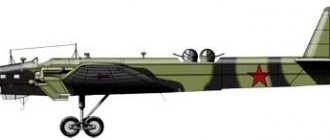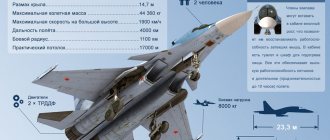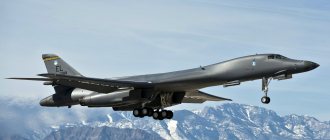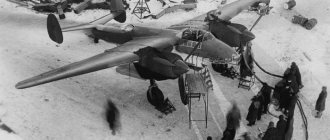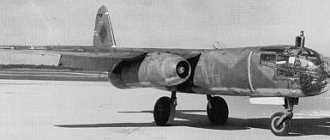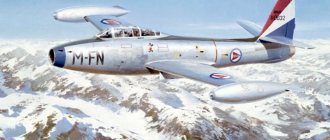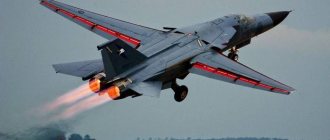Fast bomber
De Havilland
The all-wood Mosquito is one of the most successful projects in the history of aviation. In terms of versatility, only the Ju-88 can compete with this aircraft. The designers sought to create a bomber that would not require defensive weapons due to its extremely high speed.
Like many other remarkable aircraft, it appeared without an official order, and was met with hostility by officials. Even after the prototype was ordered in a small series (only 50 aircraft), production of the aircraft was stopped three times, especially after the evacuation from Dunkirk. And each time, only the courage of the only ardent supporter Patrick (later Sir Patrick) Hennessy from Ford Motors, thanks to Lord Beaverbrook, helped this British aircraft finally go into production. So, in November 1940, the only prototype took off. Everyone was surprised by the fantastic flight qualities that the Mosquito showed.
The de Havilland Aircraft Company was engaged mainly in light aircraft and very primitive light transport aircraft of mixed design, but in 1936 they designed the aerodynamically magnificent (but technically unsuccessful) DH airliner. 91 “Albatross” of all-wood construction. A few months later work began on a military project with two Merlin engines, fulfilling the requirements of the R. 13/36 specification, but it was not accepted, mainly because the wooden structure was not taken seriously by anyone. Nevertheless, the design team of R. E. Bishop, R. M. Harkson and S. T. Wilson continued to explore the possibilities of a new high-speed bomber capable of outpacing contemporary fighters and also equipped with a gun turret. This concept made a good impression. But the designers threw out the turret, reduced the crew from six to two people, placed the pilot on the left in the bow cockpit, and the navigator-bombardier on his right. He was also a radio operator. The large-scale effect was that the required weight of the aircraft structure and, accordingly, the required amount of fuel decreased. Calculations showed that with two Merlins, an unarmed bomber would be able to carry 454 kg of bombs over 2,400 km with a flight weight of 6,800 kg, while showing excellent speed qualities - the speed could reach 655 km/h, almost twice the speed of other British bombers.
The plane could have taken off in early 1939, but officials, including the Main Aviation Staff, showed complete disinterest or indifference. Dozens of arguments were put forward to show that an unarmed bomber was useless, that a crew of two could not carry out the mission, and that the company's proposals were meaningless. At a major meeting at the Air Ministry, shortly after the Munich crisis of 1938, they officially refused to consider the proposals, but invited De Havilland to make a wing for one of the proposed bomber programs. Even after the start of the war, members of the aviation headquarters saw nothing in the proposals other than a meaningless demonstration. But it was not long after the outbreak of war that, largely with the support of Air Marshal Sir Wilfred Freeman, the air staff began to admit that the aircraft with two Merlins, if completed, would be used for reconnaissance and could be unarmed and even wooden . With great effort, this point of view won out on March 1, 1940, when a contract was signed to build a prototype of 49 more aircraft.
First DH. 98 Mosquito, serial number W4050, was built in secrecy at Salisbury Hall, near the Hanfield works, where it was transported by road on 3 November. Geoffrey De Havilland Jr. made its first flight on November 25, 1940. It was noted that with twice the engine power, wing area and more than twice the weight of the Spitfire, the Mosquito flew 32 km/h faster. Nobody at the Air Ministry believed it - they were shocked. The prototype, officially tested at Boscombe Down in February 1941, achieved a speed of 631 km/h - faster than any RAF fighter.
The basis of the design is a streamlined monoplane with a wing tapering at the ends, mounted in the middle position, above a bomb bay for four 113-kg bombs. The pilot sat in front, almost at the level of the leading edge of the wing, having an excellent view, with the exception of the view to the sides and down, which was blocked for him by the engine cowlings, which even protruded beyond the trailing edge. Almost the entire structure was wooden, the wings had two spars and plywood skin (double, on the lower surface) with pine stringers, while the fuselage was assembled from the left and right halves, which had a given shape with a sandwich skin (veneer-balsa-veneer ). The control surfaces were made of light alloy with metal covering on the ailerons and fabric on the rudders, and the wing flaps were made of wood with a hydraulic drive. Radiators were placed in an unusual way: in the nose of the wing, between the engines and the fuselage, which gave a positive effect in cruising flight, and simple landing devices included two shock-absorbing struts with rubber blocks. This precluded precision metalworking, and the total weight of casting (113 kg) and stamping (13.6 kg) was much less than on any other twin-engine aircraft of the time.
Flight tests showed the need to increase the wing span from 16 to 16.51 m and the tail area, improve the engine cowlings and exhaust system and lengthen the engine nacelles, turning the flaps into four small sections driven by rotating tubes. The leading edge slats turned out to be unnecessary. Despite the fact that the aircraft was intended to be used only as a reconnaissance aircraft, its excellent flight characteristics now opened the way for bomber and fighter variants. In the summer of 1941, many different ideas were put forward or tested, including the installation of Merlin 60 series engines with a two-stage supercharger, four-bladed propellers, and an increase in wing span to 19.81 m. The implementation of only half of these proposals led to the partial lifting of restrictions on high-altitude flights versions in 1942 and to the creation of the F Mk XV, and most importantly, to the installation of guns and bombs. Bishop decided to place four 20-mm Hispano cannons in a compartment under the cabin floor, and in 1942 the F.Mk II night fighter went into production with these cannons and four 7.7-mm Browning machine guns in the nose, plus the latest radar AI Mk IV. The fighter had side entrance doors instead of lower hatches and armored glass.
In October 1941, it turned out that the aircraft could carry four 227 kg bombs, but with a specially shortened or trimmed stabilizer. This was initially rejected, but after lengthy tests it was considered quite successful, and standard bombs began to be produced with a shortened tail. Thus, the bomb load immediately doubled, and the V. Mk IV went into mass production along with the fighter in 1942. The T Mk III, a two-seat trainer, flew in 1942 but was mainly built after the war, such was the need for combat "Mosquito" " Meanwhile, the initially ordered 49 aircraft with short engine nacelles entered service in the summer of 1941 as Mosquito PR photo reconnaissance aircraft. Mk I or as converted into V.Mk IV bombers, all with a 907 kg bomb load.
The aircraft was produced in many variants.
Of these, the B (Bomber) bombers included Mk-IV (273 aircraft with a bomb load of 907 kg), Mk-VII (25 Canadian-made aircraft), Mk-IX (54 aircraft with a bomb load of up to 1814 kg), Mk-XVI ( 1,200 pressurized cabin Mk-IX vehicles), Mk-XX (145 Canadian-built vehicles with American equipment) and Mk-XXV (400 Canadian-built vehicles). De Havilland Mosquito
| B.M.K. IV | B. Mk. IX | B. Mk. XVI | NF. Mk. XIX | ||
| Crew | 2 | ||||
| Dimensions | |||||
| Length, m | 12,22 | 12,65 | 12,65 | 12,34 | |
| Wingspan, m | 16,52 | ||||
| Wing area, m2 | 40,9 | ||||
| Weights and loads, kg: | |||||
| Empty weight | 6000 | 6300 | 6700 | 6622 | |
| Max. takeoff | 9866 | 10422 | 11766 | 10260 | |
| Power point | |||||
| 2 X PE Rolls-Royce Merlin | 21 | 72 | 76 | 25 | |
| Power, hp | 2×1280 | 12×1680 | 2×1710 | 2×1635 | |
| Flight data | |||||
| Speed, km/h | maximum | 612 | 657 | 668 | 608 |
| at height, m | 4300 | 7900 | 8500 | ||
| Practical ceiling, m | 8300 | 10300 | 12000 | 8535 | |
| Armament | |||||
| Bomb, kg | in the bomb bay | 908 | 908 | 1362 | |
| on the outside | — | 454 | 454 | ||
Aircraft modifications
- Mosquito PR.Mk IV - a reconnaissance version created on the basis of the B.Mk IV, which was equipped with up to four cameras.
- Mosquito B.Mk V - an improved version of the B.Mk IV with underwing suspensions; Only one prototype aircraft was built.
- Mosquito FB.Mk VI - the most intensively produced variant, which was either an aircraft for capturing enemy airfields, or a fighter-bomber developed on the basis of a prototype of the F.Mk II fighter; could carry bombs inside the fuselage and under the wing, and since 1944. and rockets.
- Mosquito B.Mk VII - a variant built in Canada based on the B.Mk V prototype.
- The Mosquito PR.Mk VIII is a reconnaissance variant similar to the B.Mk IV, but with Merlin engines with two-stage superchargers.
- Mosquito PR.Mk IX is a reconnaissance version with engines equipped with two-stage superchargers and an increased fuel reserve.
- Mosquito B.Mk IX - high-altitude bomber; since 1944 it became capable of carrying one heavy-duty high-explosive bomb weighing 1814 kg.
- Mosquito NF.Mk X - night fighter with engines with two-stage superchargers; was not built.
- Mosquito FB Mk XI - fighter-bomber with engines with two-stage superchargers; was not built.
- Mosquito NF.Mk XII - designation of the NF.Mk II aircraft after the installation of the AL Mk VIII centimeter radar.
- The Mosquito NF.Mk XIII is a new production night fighter equivalent to the converted NF.Mk XII aircraft.
- Mosquito NF.Mk XIV - was proposed as an improvement to the NF.Mk XIII aircraft; was not built.
- The Mosquito NF.Mk XV is a high-altitude night fighter with an increased wingspan, a pressurized cabin, AL Mk VIII radar and two-stage superchargers for the engines.
- The Mosquito B.Mk XVI is a development of the D.Mk IX with a pressurized cabin and the ability to carry a 1,814 kg (4,000 lb) bomb.
- Mosquito PR.Mk XVI - reconnaissance version of the B.Mk XVI aircraft with a small astrodome; the first pressurized version of the PR aircraft.
- Mosquito NF.Mk XVII - designation of the NF.Mk II aircraft after the installation of the AL Mk X radar.
- Mosquito FB.Mk XVIII - modification of the FB.Mk VI aircraft, equipped with a 57 mm Molins cannon, rocket shells and reinforced armor; used mainly against submarines and ships.
- Mosquito NF.Mk XIX is a night fighter based on the NF.Mk XIII aircraft with a “universal” nose section for mounting AL radars.
- Mosquito B.Mk XX is a bomber built in Canada.
- The Mosquito FB.Mk 21 is the Canadian equivalent of the FB.Mk VI.
- The Mosquito T.Mk 22 is the Canadian equivalent of the T.Mk III.
- Mosquito B.Mk 23 - Canadian equivalent of the B.Mk IX; was not built.
- Mosquito FB.Mk 24 - Canadian fighter-bomber with engines equipped with two-stage superchargers; was not built.
- Mosquito B.Mk 25 is a Canadian-built modification of the B.14 Mk XX aircraft with Packard-Merlin engines.
- Mosquito FB.Mk 26 is a Canadian-built modification of the FB.Mk 21 aircraft with Packard-Merlin engines.
- Mosquito T.Mk 27 is a Canadian-built modification of the T.Mk 22 aircraft with Packard-Merlin engines.
- Mosquito T.Mk 29 - training aircraft converted from FB.Mk 26.
- The Mosquito NF.Mk 30 is a high-altitude night fighter powered by Merlin engines with two-stage superchargers, equipped with ECM electronic countermeasures.
- Mosquito NF.Mk 31 - variant of the NF.Mk 30 with Packard-Merlin engines; was not built.
- The Mosquito PR.Mk 32 is a high-altitude reconnaissance aircraft similar to the NF.Mk XV.
- Mosquito TR.Mk 33 - naval torpedo bomber, reconnaissance aircraft, "Sea Mosquito" fighter for use from aircraft carriers; similar to the FB.Mk VI aircraft, with folding wings and a brake hook.
- Mosquito PR.Mk 34 - long-range reconnaissance aircraft with additional fuel in the bomb bay.
- Mosquito B.Mk 35 is a long-range, high-altitude aircraft based on the B.Mk XVI model with a pressurized cabin.
- Mosquito NF.Mk 36 - basically similar to the NF.Mk 30 variant, but with Merlin high-altitude engines.
- Mosquito TR.Mk 37 is a variant of the TR.Mk 33 aircraft with radar.
- Mosquito NF.Mk 38 is a variant of the NF.Mk 30 with radar.
- Mosquito TT.Mk 39 is a variant of the B.Mk XVI after conversion for towing targets.
- Mosquito FВ.Mk 40 is a variant of the FB.Mk VI aircraft built in England.
- Mosquito PR.Mk 40 - Australian aerial reconnaissance aircraft, converted from the FB.Mk 40 variant.
- The Mosquito FB.Mk 41 is an Australian fighter-bomber similar to the FB.Mk 40, but with two-stage superchargers.
- Mosquito PR.Mk 41 - Australian reconnaissance aircraft; development of the PR.Mk 40 model, but with two-stage superchargers.
- Mosquito FВ.Mk 42 is the only Australian modification of the FB.Mk 40 aircraft with Merlin 69 engines.
- The Mosquito T.Mk 43 is an Australian-built training variant of the T.Mk III.
Wooden wonder De Havilland DH98 Mosquito
Somewhat strangely, many (if not most) British combat aircraft were “conceived” not on instructions from the Ministry of Defense, but as a private initiative of development companies. This was the fate of the Spitfire; the same circumstances accompanied the birth of another legendary car - the Mosquito. In October 1938, De Havilland Co began development of a light bomber project without defensive small arms. Submitted some time later to the Ministry of Aviation, this project, however, did not receive a positive assessment. Only thanks to the enthusiastic support of Wilfred Freeman (who held a high position in the ministry) was it possible to continue work, and after the start of the war, to receive an official order for a high-speed light bomber with a bomb load of 454 kg and a range of 2400 km. Work on this task began on December 29, 1939. The new project received the corporate designation DH.98; it was headed by R. Bishop. Based on the experience gained during the creation of the DN.88 Comet, another famous aircraft of the company, the designers decided to carefully “polish” the new car, use wood as much as possible, and use Rolls-Royce Merlin in-line engines as a power plant (because of their small amidships).
By the way, this engine (one of the outstanding ones in the history of aviation), installed on Spitfires, Hurricanes, Lancasters and Mustangs, was also created on a private initiative! By choosing wood as the basis for the airframe design, the designers killed two birds with one stone: they were able to use unskilled labor, and also provided a smooth outer surface, so important for a high-speed machine. Some believed and continue to believe that the Mosquito design almost saved the aviation industry from a shortage of metal, and the aircraft itself was supposedly absolutely insured against any difficulties with the supply of material. Of course, such considerations cannot be taken seriously: firstly, British industry could well provide duralumin to Da Havilland; and secondly, the wood for “Mosquito” had to be brought from the tropics - balsa does not grow in England! In May 1940, after the evacuation of British troops from the mainland and the subsequent surrender of France, there was no time for experimental aircraft, and the design of a new aircraft was stopped, fortunately, not for long. Very soon the designers again began to work with maximum stress. Less than 11 months passed, and on November 23, 1940, the bright yellow prototype, piloted by the son of the company's founder, Geoffrey de Havilland Jr., took its first flight. When this machine demonstrated its capabilities to the military, the latter were surprised not only by the incredible speed (more than 600 km/h!), but also by the fact that the plane was spinning upward rolls on one engine!
The theme of the series limits the history of the “Mosquito” to a story only about “pure” bombers, leaving aside photo reconnaissance aircraft, night fighters, attack aircraft (fighter-bombers), carrier-based aircraft and auxiliary vehicles. Nevertheless, it should be noted that priority in production and adoption remained with reconnaissance aircraft - the first combat flight of the Mosquito PR.Mk.l took place in September 1941. At this time, the prototype of the bombardment modification was still being tested. Having started its serial production, the company's factories rebuilt the first 8 aircraft from unfinished PR.Mk.l. Then the production of a large series (290 units) of slightly modernized aircraft began: the engine nacelles, which had not previously protruded beyond the trailing edge, were lengthened to improve streamlining. These vehicles were named B.Mk.lV Series 1 and B.Mk.IV Series II, respectively. During the “run-in” it was discovered that the weight of the bombs (454 kg) was limited not by the carrying capacity, but by the size of the bomb bay, and the aircraft was quite capable of carrying a double load. For the Mosquito, they created a 227-kg bomb with a special shortened stabilizer - after which the vehicle was able to carry four such gifts on an internal sling. The first bombers entered the combat unit in the spring of 1942 - the 105th squadron. And on May 31, these machines “sniffed gunpowder” for the first time: after the first “thousand-strong” raid of British bombers on Cologne the previous night, four “fours” launched a daylight attack on the city; one of them did not return... At the same time, the Mosquito became the only Bomber Command aircraft that regularly operated during the day over the territory of Western Europe. Soon the car became widely known, and with it the pathetic nickname “Wooden Miracle” and the ironic “Termite’s Dream”; the crews preferred a shorter nickname: “Mossy”... The fast “Mossy” - the Mosquito bomber B.Mk.IV - was a twin-engine cantilever monoplane of predominantly wooden construction with a crew of two people. The fuselage is an all-wood monocoque, without connectors, reinforced between the wing and tail by frames and spars. Two (left and right) symmetrical halves were glued together and connected after installing the control system. The cladding is a “sandwich” formed by a balsa layer covered with plywood on both sides. The direction of plywood layers in the middle part is predominantly along the fuselage (bending work); in the tail section it was diagonal (for bending and torsion). In the front part there was a crew cabin (in front of the navigator-bombardier, behind him and above, offset to the left - the pilot). The entrance hatch was in the floor, to the right of the pilot, and opened outward. Before assembly, the fuselage had a large cutout at the bottom into which the wing was inserted; There was a bomb bay underneath it.
The wing is mid-mounted, two-spar, solid wood, one-piece. The thick load-bearing skin is made according to the same principle as that of the fuselage, and is covered with canvas on top. Oil radiators and engine cooling systems were located between the engines and the fuselage at the leading edge. The flaps and ailerons are a metal frame covered with fabric.
The stabilizer and keel had a wooden frame with plywood sheathing. The design of the elevators and directional rudders is the same as that of the ailerons. The landing gear is fully retractable, including the tail wheel. The main and tail “legs” are cushioned by rubber blocks inside the struts that work in compression. The landing gear was retracted and released by a hydraulic system; the wheels of the main struts had Bendix pneumatic brakes. The tail wheel is metal, self-orienting. Engines (two) - in-line, V-shaped 12-cylinder Rolls-Royce “Merlin” XXI with liquid cooling, take-off power 1280 hp. With. Three-blade propellers, variable pitch, “constant speed”, feathered DH (Hamilton-Standard) Hydromatik.
Fuel tanks were located between the wing spars outside the engine nacelles (2x155 l + 2x109 l), between the engine nacelles and the fuselage (2x298 l + 2x355 l) and inside the fuselage (2x309 l). All tanks are protected. Additional non-resettable (227 l) “bulk” tanks could be mounted under the wing. The bombs were placed inside the bomb bay. The maximum load (non-special options) was 4 bombs of 113 kg or 4 special (shortened stabilizer) bombs of 227 kg. There were no small arms.
After a successful debut, other squadrons began to receive the new bomber, but during 1942, only two were added to the 105th - the 139th and 109th. The outstanding qualities of the “Mossi” made it possible (and at the same time forced) to search and develop new tactics that would make it possible to make maximum use of the capabilities of de Havilland’s successful design. After some time, ultra-low altitudes became the main focus for the Mosquito, and not only the attack, but the entire flight to the target was carried out literally at the height of the treetops. This made it possible to hide from enemy radar (or at least reduce the warning time to a minimum) and created certain difficulties for anti-aircraft artillery. And the magnificent gray-green camouflage saved us from interceptors. Of course, it would be an exaggeration to consider the Mossi invulnerable to fighters. But thanks to its speed, maneuverability and stealth, its chances of survival were significantly higher than those of “classic” vehicles covered in machine-gun emplacements. Another advantage of strafing attacks was a noticeable increase in the accuracy of “laying” bombs. “Mosquito” simply became specialists in precision bombing strikes, one might even say “surgical” bombing operations. In this respect, the aircraft was fully consistent with its name “Mosquito” (a more logical translation for England). “De Havilland” could not provide (even together with the companies Standard Motors, Percival and Airspeed connected to production) a number of vehicles sufficient for massive use. Squadrons of “Komarov” were entrusted with complex, “delicate” tasks that required instant appearance, accurate and quick strike and lightning-fast disappearance. And in most cases, these orders were successfully carried out: one can recall the attacks on the submarine shipyards in Flensburg, the Gestapo building in Oslo or the molybdenum mining complex in Knaben (Norway). The 105th and 139th squadrons became the most skilled in attacks of this kind, earning great popularity and often operating together. They also developed a special attack in two groups: one dropped bombs from the heights of the roofs of houses, and after a few seconds the second appeared and covered the target in a shallow dive. These squadrons carried out one of the most famous (albeit purely propaganda) attacks - the daytime raid on the Sportspalast building in Berlin on January 30, 1943. That day they celebrated the 10th anniversary of the Nazis coming to power, but Goering was able to speak only an hour after the announcer announced...
While the crews were honing their skills, the development of the Mosquito went on as usual. The creation of high-altitude reconnaissance aircraft also gave birth to a new bomber modification, the B.Mk.lX, released in March 1943. Two special units appeared under its wing - each could be used to hang a tank (454 l) and a bomb (227 kg). In addition, these cars differed from the usual “fours” with more powerful and high-altitude Rolls-Royce Merlin 72 engines. As a result, the “nines” were able to reach the target at an altitude of 9,500 m, and after dropping bombs, they climbed even to 11,000 m. However, the production of the B.Mk.lX did not last long, and in terms of the number of vehicles built (54), this modification turned out to be the smallest among the bombers. The reason, apparently, was work on a new, more advanced and promising B.Mk.XVI. In the summer of 1943, a significant change occurred in the fate of the Mossi - the squadron switched from daytime raids to night work. This was not a forced measure at all - the level of losses was kept quite low - simply, by agreement between the Royal Air Force and the US Air Force, a time limit was introduced for combat operations - the British operated at night, the Americans - during the day. In this regard, the available Mossi forces (13 squadrons) were brought together into a special 8th group. According to the nature of the tasks they performed, they were divided into “light night strike forces” (conducting “harassment” raids that kept air defense forces on their toes or distracted) and target markers (the three squadrons mentioned above). The markers themselves were part of the elite Pathfinder Force (“Pathfinders” ). Other modifications of the aircraft: Mosquito PR.Mk IV - a reconnaissance version created on the basis of the B.Mk IV, which was equipped with up to four cameras. Mosquito B.Mk V - an improved version of the B.Mk IV with underwing suspensions; Only one prototype aircraft was built. Mosquito FB.Mk VI - the most intensively produced variant, which was either an aircraft for capturing enemy airfields, or a fighter-bomber developed on the basis of a prototype of the F.Mk II fighter; could carry bombs inside the fuselage and under the wing, and since 1944. and rockets. Mosquito B.Mk VII is a variant built in Canada based on the prototype B.Mk V. Mosquito PR.Mk VIII is a reconnaissance variant similar to the B.Mk IV, but with Merlin engines with two-stage superchargers. Mosquito PR.Mk IX is a reconnaissance version with engines equipped with two-stage superchargers and an increased fuel reserve. Mosquito B.Mk IX - high-altitude bomber; since 1944 became capable of carrying one heavy-duty high-explosive bomb weighing 1814 kg. Mosquito NF.Mk X - night fighter with engines with two-stage superchargers; was not built. Mosquito FB Mk XI - fighter-bomber with engines with two-stage superchargers; was not built. Mosquito NF.Mk XII - designation of the NF.Mk II aircraft after the installation of the AL Mk VIII centimeter radar. The Mosquito NF.Mk XIII is a new production night fighter equivalent to the converted NF.Mk XII aircraft. Mosquito NF.Mk XIV - was proposed as an improvement to the NF.Mk XIII aircraft; was not built. The Mosquito NF.Mk XV is a high-altitude night fighter with an increased wingspan, a pressurized cabin, AL Mk VIII radar and two-stage superchargers for the engines. The Mosquito B.Mk XVI is a development of the D.Mk IX with a pressurized cabin and the ability to carry a 1,814 kg (4,000 lb) bomb. Mosquito PR.Mk XVI - reconnaissance version of the B.Mk XVI aircraft with a small astrodome; the first pressurized version of the PR aircraft. Mosquito NF.Mk XVII - designation of the NF.Mk II aircraft after the installation of the AL Mk X radar. Mosquito FB.Mk XVIII - modification of the FB.Mk VI aircraft, equipped with a 57 mm Molins cannon, rocket shells and reinforced armor; used mainly against submarines and ships. Mosquito NF.Mk XIX is a night fighter based on the NF.Mk XIII aircraft with a “universal” nose section for mounting AL radars. Mosquito B.Mk XX is a bomber built in Canada. The Mosquito FB.Mk 21 is the Canadian equivalent of the FB.Mk VI. The Mosquito T.Mk 22 is the Canadian equivalent of the T.Mk III. Mosquito B.Mk 23 - Canadian equivalent of the B.Mk IX; was not built. Mosquito FB.Mk 24 - Canadian fighter-bomber with engines equipped with two-stage superchargers; was not built. Mosquito B.Mk 25 is a Canadian-built modification of the B.14 Mk XX aircraft with Packard-Merlin engines. Mosquito FB.Mk 26 is a Canadian-built modification of the FB.Mk 21 aircraft with Packard-Merlin engines. Mosquito T.Mk 27 is a Canadian-built modification of the T.Mk 22 aircraft with Packard-Merlin engines. Mosquito T.Mk 29 - trainer aircraft converted from FB.Mk 26. Mosquito NF.Mk 30 - high-altitude night fighter with Merlin engines with two-stage superchargers, with electronic countermeasures ECM equipment. Mosquito NF.Mk 31 - variant of the NF.Mk 30 with Packard-Merlin engines; was not built. The Mosquito PR.Mk 32 is a high-altitude reconnaissance aircraft similar to the NF.Mk XV. Mosquito TR.Mk 33 - naval torpedo bomber, reconnaissance aircraft, Sea Mosquito fighter for use from aircraft carriers; similar to the FB.Mk VI aircraft, with folding wings and a brake hook. Mosquito PR.Mk 34 - long-range reconnaissance aircraft with additional fuel in the bomb bay. Mosquito B.Mk 35 is a long-range, high-altitude aircraft based on the B.Mk XVI model with a pressurized cabin. Mosquito NF.Mk 36 - basically similar to the NF.Mk 30 variant, but with Merlin high-altitude engines. Mosquito TR.Mk 37 is a variant of the TR.Mk 33 aircraft with radar. Mosquito NF.Mk 38 is a variant of the NF.Mk 30 with radar. Mosquito TT.Mk 39 is a variant of the B.Mk XVI after conversion for towing targets. Mosquito FВ.Mk 40 is a variant of the FB.Mk VI aircraft built in England. Mosquito PR.Mk 40 - Australian aerial reconnaissance aircraft, converted from the FB.Mk 40 variant. Mosquito FB.Mk 41 - Australian fighter-bomber, similar to the FB.Mk 40 aircraft, but with two-stage superchargers. Mosquito PR.Mk 41 - Australian reconnaissance aircraft; development of the PR.Mk 40 model, but with two-stage superchargers. The Mosquito FB.Mk 42 is the only Australian modification of the FB.Mk 40 aircraft with Merlin 69 engines. The Mosquito T.Mk 43 is an Australian-built training version of the T.Mk III. Performance characteristics: Year of adoption - 1941 Wing span - 16.5 m Length - 12.55 m Height - 3.81 m Wing area - 42.18 sq.m Weight, kg - empty aircraft - 6638 - normal take-off — 9894 — maximum takeoff — 10152 Engine type — 2 PD Merlin 21 Power — 2 x 1480 hp Maximum speed - 549 km/h Cruising speed - 491 km/h Practical range - 1786 km Maximum rate of climb - 816 m/min Practical ceiling - 9150 m Crew - 2 people Armament: Bomb load up to 1820 kg. 1 x 454 kg bomb and 2 x 227 kg bombs or 4 x 227 kg bombs or 1 x 1816 kg bomb, Oboe bomber sight.
https://www.brazd.ru/mosquito.html
